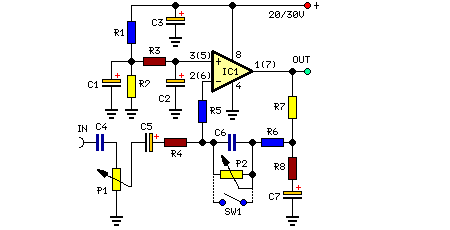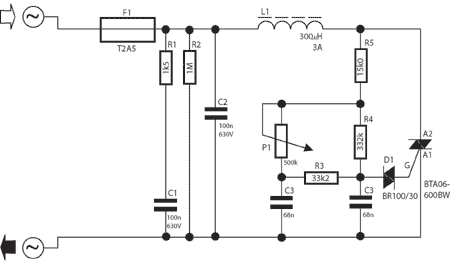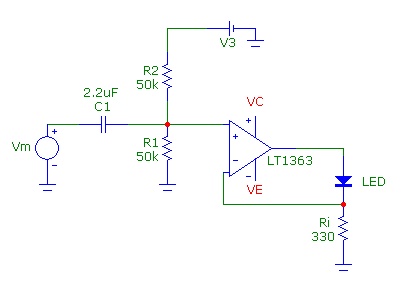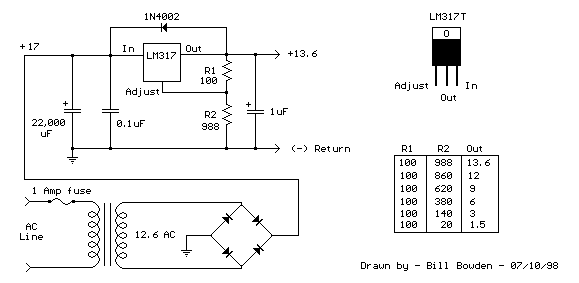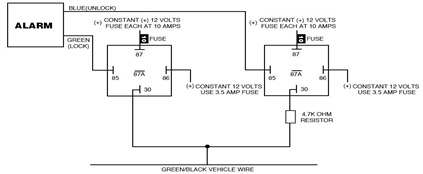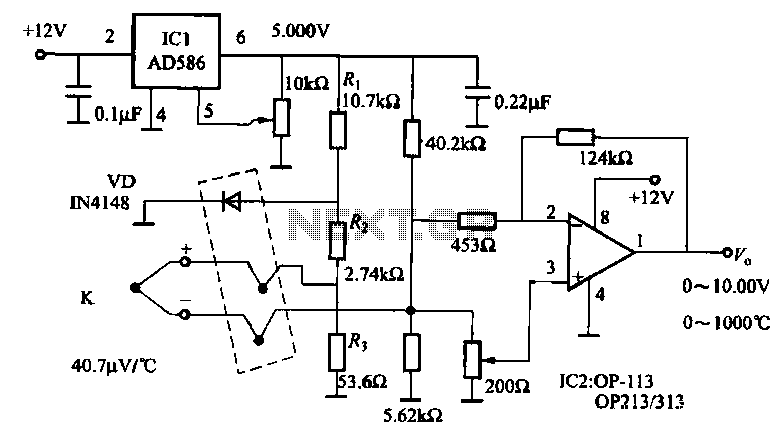
Solid State Latching Relay Circuit
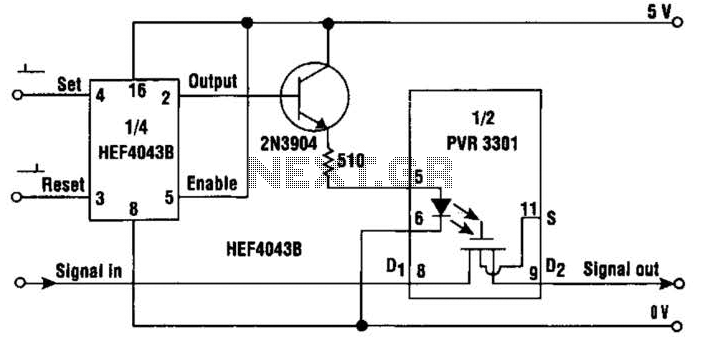
This simple circuit provides a solid-state equivalent of the electromechanical latching relay. The switching mechanism is clean, highly resistant to vibration and shock, and is not sensitive to magnetic fields or position. The circuit operates as follows: a set pulse to the 4043 RS latch takes its output high and turns on the 2N3904 transistor. Current then flows through the photovoltaic relay's LED, causing the resistance between D1 and D2 to decrease from several gigaohms to less than 30. The photovoltaic relay will remain in this state until a reset pulse is received by the 4043 RS latch.
The circuit utilizes a 4043 RS latch, which is a type of bistable multivibrator. This component is critical for maintaining the state of the output until a reset signal is applied. The latch can be set by applying a high pulse to its input, which activates the output and subsequently triggers the 2N3904 NPN transistor. The transistor acts as a switch, allowing current to flow through the LED of the photovoltaic relay (PVR).
The PVR is designed to respond to the LED's illumination, which effectively serves as a light source to change its internal state. As the LED is energized, the resistance between the points D1 and D2 drops significantly, indicating a transition from an open circuit condition (high resistance) to a closed circuit condition (low resistance). This transition is crucial for applications requiring a reliable and robust switching mechanism.
The circuit's resilience to external factors such as vibration and magnetic fields makes it particularly suitable for environments where traditional electromechanical relays may fail. Additionally, the solid-state nature of the components ensures a longer lifespan and reduced maintenance needs. The reset functionality provided by the 4043 RS latch allows for easy reinitialization of the circuit, making it versatile for various applications that require repeated on-off cycling without physical wear on mechanical parts.
Overall, this circuit design exemplifies modern electronic engineering principles, combining efficiency, reliability, and durability in a compact configuration. This simple circuit provides a solid-state equivalent of the electromechanical latching relay (see the figure). What`s more, the switching is clean, highly resistant to vibration and shock, and isn`t sensitive to magnetic fields or position.
The circuit operates as follows: a set pulse to the 4043 RS latch takes its output high and turn on the 2N3904 transistor. Current will then flow through the photovoltaic relay`s LED and the resistance between D1 and D2 will fall from several gigaohms to less than 30.
The PVR will remain in this state until a reset pulse is received by the 4043 RS latch. 🔗 External reference
The circuit utilizes a 4043 RS latch, which is a type of bistable multivibrator. This component is critical for maintaining the state of the output until a reset signal is applied. The latch can be set by applying a high pulse to its input, which activates the output and subsequently triggers the 2N3904 NPN transistor. The transistor acts as a switch, allowing current to flow through the LED of the photovoltaic relay (PVR).
The PVR is designed to respond to the LED's illumination, which effectively serves as a light source to change its internal state. As the LED is energized, the resistance between the points D1 and D2 drops significantly, indicating a transition from an open circuit condition (high resistance) to a closed circuit condition (low resistance). This transition is crucial for applications requiring a reliable and robust switching mechanism.
The circuit's resilience to external factors such as vibration and magnetic fields makes it particularly suitable for environments where traditional electromechanical relays may fail. Additionally, the solid-state nature of the components ensures a longer lifespan and reduced maintenance needs. The reset functionality provided by the 4043 RS latch allows for easy reinitialization of the circuit, making it versatile for various applications that require repeated on-off cycling without physical wear on mechanical parts.
Overall, this circuit design exemplifies modern electronic engineering principles, combining efficiency, reliability, and durability in a compact configuration. This simple circuit provides a solid-state equivalent of the electromechanical latching relay (see the figure). What`s more, the switching is clean, highly resistant to vibration and shock, and isn`t sensitive to magnetic fields or position.
The circuit operates as follows: a set pulse to the 4043 RS latch takes its output high and turn on the 2N3904 transistor. Current will then flow through the photovoltaic relay`s LED and the resistance between D1 and D2 will fall from several gigaohms to less than 30.
The PVR will remain in this state until a reset pulse is received by the 4043 RS latch. 🔗 External reference
